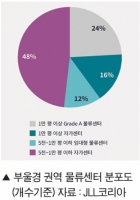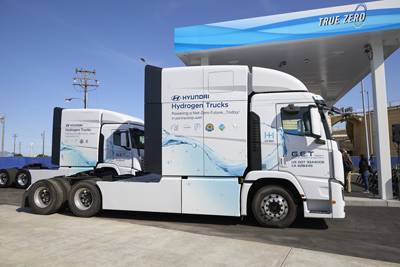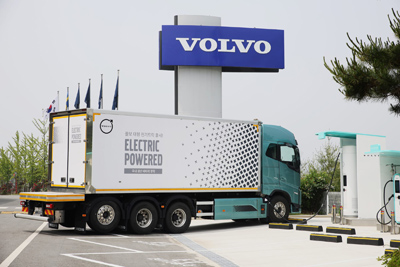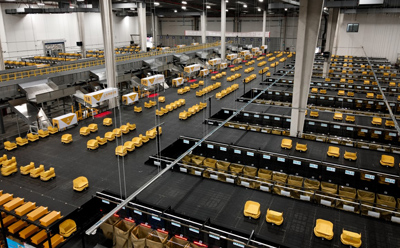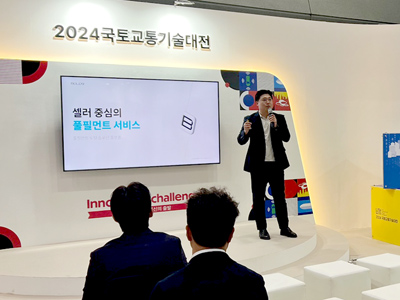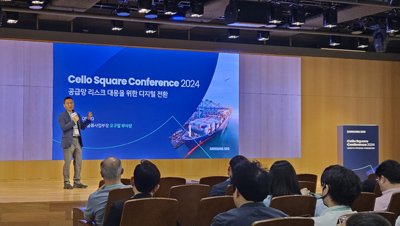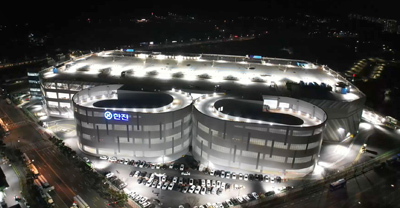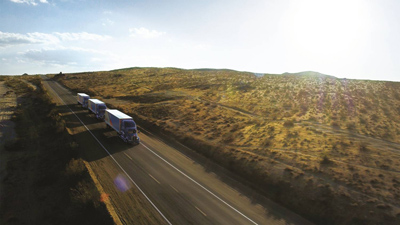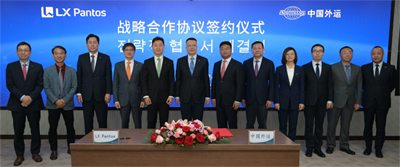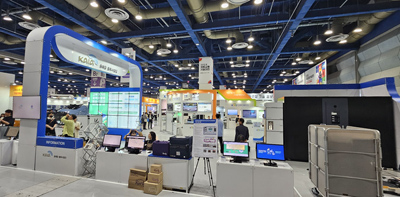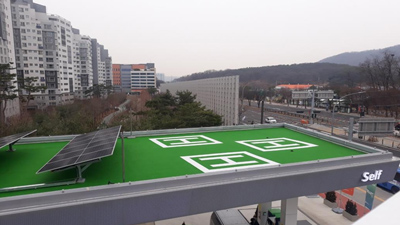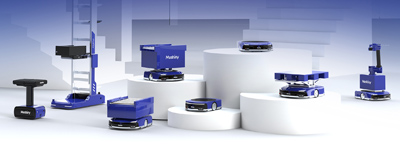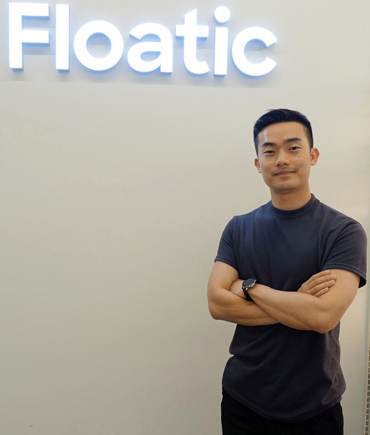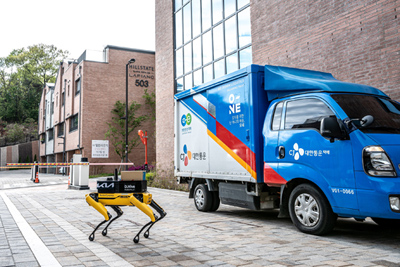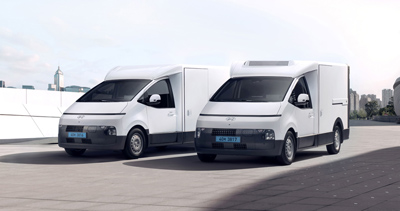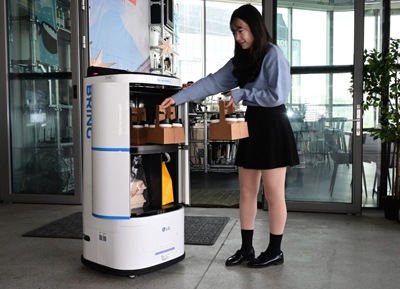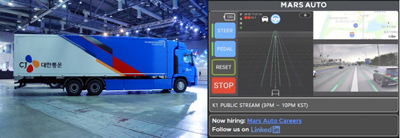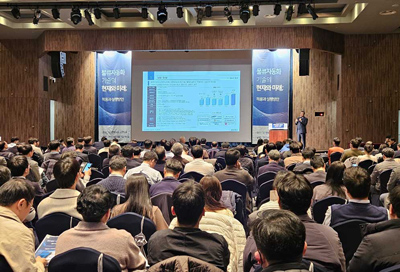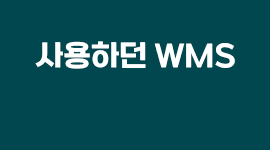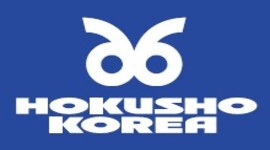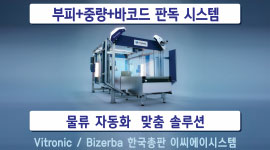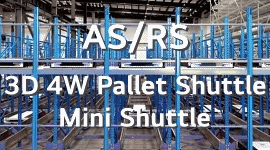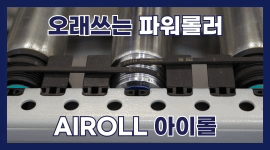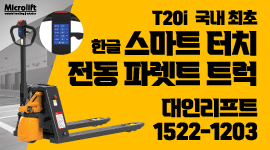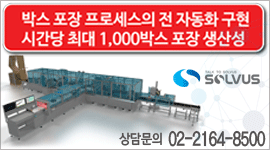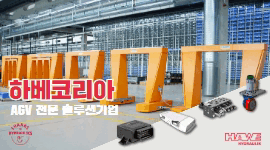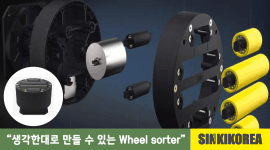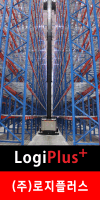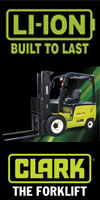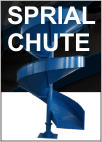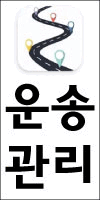| KOREA MAT 2024 / 'Robot loading and unloading, AI sorting, and autonomous transport robots' to be featured in future logistics technologies | |



|
|
|
|
|
|
'Robot loading and unloading, AI sorting, and autonomous transport robots' to be featured in future logistics technologies Strong government support, including more than 100 billion won in R&D to leapfrog the advanced logistics industry 2024/05 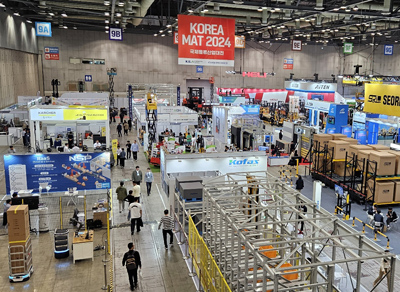 Korea International Materials Handling & Logistics(KOREA MAT 2024), where you can meet future logistics technologies in one place, was held from April 23 to 27 at KINTEX Exhibition Center 2 for four days. At the exhibition, more than 150 companies in the logistics field, including transportation, services, and facilities, exhibited their cutting-edge smart logistics facilities, solutions, and services through a total of 750 booths. In particular, autonomous robots and trucks, smart trailers, logistics automation processes, and picking robots attracted attention. The exhibition was organized into four zones: ▲Automation & Robot ▲Logistics Service ▲Forklift/Material Handling Equipment ▲Cold Chain Solution. In the Automation & Robot zone, various robots utilized in logistics were exhibited, including autonomous delivery robots that carry goods by themselves, sorting robots that sort by destination, picking robots based on AI machine vision, GTP systems consisting of high-density loading racks and AMRs, and robot-based palletizing/depalletizing. Representative companies included Exotech, Mushiny, Geekplus, Hi Robotics, Tweeny, and Simes. In the Logistics Service zone, companies such as Korea Post and Coupang introduced logistics services for B2B and B2C, as well as eco-friendly hydrogen trucks and autonomous vehicles. The Forklift/Material Handling Equipment zone showcased traditional logistics equipment such as logistics center doors and forklifts, as well as shuttle trucks, automated forklifts, and automatic cargo loading and unloading systems. Representative companies included Hana Machinery, Heli Forklift, Seorim Industrial, Copas, Tobica, and Speedfloor. In the Cold Chain Solution zone, Korea Container Pool introduced a circular logistics system for fresh logistics, eco-friendly packaging, and ULS containers for loading and transporting fresh food, and Willog introduced a cold chain monitoring system. Other events included a meeting with the logistics industry, an international seminar on fire safety for logistics facilities, a business briefing on the 2024 Logistics Efficiency Support Project, a seminar on new technologies and autonomous driving, a briefing on the establishment of the Army's logistics innovation collaboration infrastructure, and the signing of an MOU on robot delivery demonstration. At the logistics industry roundtable attended by MOLIT Minister Park Sang-woo, related organizations such as the Korea Transportation Research Institute and the Korea Integrated Logistics Association, as well as logistics companies such as cargo transportation and daily logistics, and smart logistics companies such as robotics and autonomous driving technologies such as Pasto, Masoto, Clobot, and Speedfloor, discussed ways to create future growth engines for the Korean logistics industry and innovate logistics services. In particular, they focused on government support measures for leapfrogging new industries in the logistics industry. As the logistics industry is rapidly changing due to the recent development of advanced technologies such as AI and robots, technological innovation from the private sector can serve as a new growth engine. MOLIT Minister Park Sang-woo said, “The logistics industry is a key key industry such as a blood vessel connecting various parts of the Korean economy, and is rapidly developing into a high-value-added industry due to the growth of daily logistics such as home delivery and the emergence of advanced and new technologies such as robots and drones.” “To help the logistics industry leap into a high-tech industry converged with smart technologies such as AI and ICT, the government will actively support it by promoting logistics R&D of more than 100 billion won, improving regulations for the commercialization of unmanned delivery, and focusing on logistics startups.” In addition, to develop and improve robot delivery technology, MOLIT, Korea Land and Housing Corporation (LH), and the Korea Association of Integrated Logistics signed a business agreement to demonstrate robot delivery in apartment buildings. While robot delivery technology has been rapidly developing in the private sector, it has been limited by the difficulty of demonstrating the technology in apartment buildings, which are the actual delivery sites. In response, MOLIT will improve related systems and regulations, LH will provide a test bed, and the Korea Integrated Logistics Association will actively cooperate in securing demand companies that wish to participate in the demonstration project. Mushiny Smart Sorting System '3D Sorter' & GTP Solution 'MIX'  Mushiny exhibited its new sorting system '3D Sorter' and GTP solution 'MIX'. The 3D sorter is a facility that sorts goods into tote boxes located on the footwall while the internal sorting carrier moves rapidly up, down, left and right when goods are injected by induction. While conventional sorters take up a large area and sort goods in one or two stages, the 3D sorter utilizes its height to sort many goods in a much smaller area. The 3D sorter is 2.7 meters high and can be installed up to 30 meters long. The sorting carriers are spaced 0.5 meters apart for ultra-high-density sorting, and the speed is 1 m/s, which can sort up to 11,440 SKUs per hour. In addition, the footwheel that sorts the goods is modular in design and can be configured as a tote box, tray, or chute type to suit the product characteristics. It can also perform various tasks such as multi-order sorting, return order sorting, and material set sorting. The 3D Sorter was first introduced in China in October last year, and will continue to be supplied to Chinese logistics companies, starting with the first delivery in June. PoCs are also underway in the US and Europe. The GTP Solution MIX consists of a rack POD that holds the tote box, an AGV, a robotic arm, and a workstation. The POD is 3.7 meters long and has 10 tiers, with the first tier holding four tote boxes for higher storage density. The AGVs are available in three different load capacities (800, 1,200, and 1,500 kilograms) to move heavily loaded PODs. The workstation is configured to stack tote boxes on top. This allows customers to choose the function according to their needs, such as storing high-turnover goods on the workstation for quick picking or using it as a temporary storage area. When an order is placed, the AGV transports the POD to the workstation, and the robotic arm removes the tote box and delivers it to the worker. With GTP Solution MIX, picking efficiency is increased by 4-5 times and labor intensity is significantly reduced. SEO RIM SRI Pallet Shuttle Rack & Pallet Mobile Rack  SEO RIM SRI exhibited a pallet shuttle and pallet mobile rack developed with its own technology. The pallet shuttle is an equipment that transports pallets while the shuttle moves automatically, enabling semi-automated operation. The advantage is that there is no aisle for forklifts to move through, maximizing storage efficiency in small spaces. The shuttle passes underneath the pallet and lifts it up as it lifts, ensuring that the pallet is moved safely without the risk of snagging or falling. The shuttle also reduces the risk of collisions with racks when loading and unloading products. The shuttles also have built-in temperature sensors to ensure that the refrigeration and freezing temperatures are just right and can send an alarm in the event of a fire. In addition, weight sensors enable inventory counting. The shuttle speed is 30 m/m when loading and 60 m/m when unloading, and the maximum load is 1,500 kg. In particular, the shuttle can be operated via Bluetooth, so it can also be operated via a cell phone app. SEO RIM SRI plans to introduce a refurbishing method to its after-sales service. This means that if there is a problem with a shuttle, it can be replaced with a new one, so that it can be used immediately without interrupting the facility. The pallet mobile rack is a pallet track that moves the rack only when working to secure the aisle. While a regular pallet track requires a forklift aisle between each rack, a pallet mobile rack requires only one forklift aisle because the racks move along the rails. Therefore, as many racks can be installed as the forklift aisle is reduced, products can be loaded, which can increase the loading rate by 2 to 2.5 times compared to ordinary pallet tracks. SEO RIM SRI used expensive German sensors to ensure long-lasting, trouble-free operation, and the simple UI makes it easy for operators to operate while looking at the display. CMES Random Palletizing & Depalletizing & Peaking Solution  CMES has introduced its Random Palletizing and Depalletizing and Peaking solutions. Random palletizing and depalletizing is a solution that uses AI and 3D vision to accurately recognize, move, and load randomly placed boxes or bags of various sizes using industrial 6-axis robots. In the case of palletizing, buffers are used to stack randomly transferred boxes of different sizes and shapes on pallets with optimal efficiency. A buffer is a physical space or system, such as a shelf, where boxes are temporarily removed to stack according to an AI-generated stacking pattern so that they can be palletized with a stable shape and optimal fill rate. A smart notification system can be installed to increase safety by sounding a warning if a person enters the area where the industrial robot is operating. By adding a six-sided barcode scanning system and sorter to the piece picking solution, the robot can accurately recognize and pick untrained logistics products of various shapes, sizes, and shapes, and verify and sort them more quickly and accurately according to the order. Meanwhile, CMES is planning an initial public offering (IPO) for later this year, and has filed for preliminary review with the Securities and Exchange Commission after receiving the highest possible rating of “AA” for a technology-enabled special listing. CMES has received more than KRW 35 billion in total investment from large companies such as GS Retail and SKT up to the Series B stage, and recently received equity investment from its customer Coupang. CMES has been recognized for its technology by directly introducing various logistics solutions to Coupang's logistics sites, starting with the supply of box deparatizing solutions in 2021. CUBOX Order Picking System 'Picking Robot'  CUBOX, a company specializing in image recognition, has introduced a picking robot based on AI image recognition. CUBOX has developed a picking robot that can replace the actual picking work of workers at Food Tree's logistics center, and it automatically puts random products in boxes on the shelves into delivery boxes according to orders. The biggest feature of the CUBOX picking robot is that it can be operated without image registration for atypical items. It determines the optimal gripping point and automatically deduces the optimal gripping order by considering the posture of the product and the shape of the gripper, without learning the image of the pre-registered product. In other words, it determines where the gripper should pick up the product using only AI vision recognition. In this case, it picks up the corners as well as the center of the product. If the gripper fails to pick up an item, the sensors recognize the failure and make the decision to pick up the dropped item again. The picking robot's joint movements are also natural. When the picking command is issued, the joint movement path is determined in real time, and if the movement is not vertical, the suction gripper will change the joint movement again naturally through a re-command. In addition, it has an image-based inspection function that prevents mishandling of orders. AITECH KOREA AIROLL Power Roller Series  AITECH Korea has launched AIROLL, a power roller with a non-gearless servo motor inside the roller. The AIROLL Power Roller enables only the part of the conveyor that is needed to transport goods to be driven, moving goods by conveyor zone. The new AIROLL has a diameter of 50 pi and is designed for conveying lightweight goods up to 300 kg. It has a stable torque output capability with a speed range of 0.1~2.7m/s, and is non-gearless, with a lifespan of more than 45,000 hours and more than 5 years when operating 24 hours a day. In addition, it has a low noise level of 60dB or less, which improves the working environment, and can be built in a freezing environment of -25℃. As AITECH Korea is a latecomer to the power roller market, the company has lowered the price while making stainless steel, an expensive material, a standard feature to increase competitiveness. Stainless steel is durable and does not bend or dent easily and does not rust easily, making it suitable for the logistics industry as well as the food industry, where hygiene is important, and environments with high humidity and rust. By utilizing the advantage of being the distributor of Damon Roller in Korea, AITECH Korea plans to supply the conveyor platform combined with Damon Roller and AIROLL in earnest in Korea, targeting the courier, e-commerce, and food industries. EXOTEC GTP-based robotic automation 'Skypod System'  EXOTEC exhibited the Skypod system, a robotic automation solution. The Skypod system consists of an autonomous Skypod robot, storage consisting of racks for storing inventory, and a station for picking by a human operator. The stations can be divided into manual stations for picking goods from the racks, order mover stations with conveyors to pack and transport the picked goods to the shipping floor, and bin interfaces for receiving goods. As such, SkyPods are easy to install and maintain due to their simplicity in logistics. It is also flexible in terms of scalability, allowing you to quickly add robots, racks, and picking stations without affecting the existing SkyPods. A key feature of the SkyPod system is that the SkyPod robots can move horizontally or vertically, meaning that in addition to transporting goods on the floor, they can also move up and down racks to pick and store inventory directly. In this way, Skyford robots move to and from designated racks and stations, carrying goods stored in bins or trays. Storage can be up to 12 meters high, allowing for high-density inventory storage, and bins and trays are available. Bins are available in three sizes: 600×400 mm long and wide, and 200/300/400 mm high. The trays can hold boxes up to 600×400×400 mm. The SkyPod system is also very fast. A Skyford robot can pick goods in two minutes for a picking order, and at the picking station, an operator can process up to 400 order lines per hour. Add a bin interface and you can stock up to 320 bins or trays per hour, and add an order mover and you can prepare up to four orders at the same time. EXOTEC also guarantees a 98% uptime of its SkyPod system. To this end, the company operates control centers in each region that monitor the SkyPod system at logistics sites around the clock, preventing problems from occurring in advance and remotely resolving them from the control center in case of malfunctions. EXOTEC, which entered Korea in earnest last year with the establishment of its Korean subsidiary, is strengthening its sales and aims to supply Skyford systems to more than 15 sites within five years, starting with two to three projects this year. KCC 'SMART Flooring System' for AGVs and AMRs  KCC's flooring for AGVs and AMRs, 'SMART Flooring System', is a high-strength, high-functional flooring with durability and excellent workability. About five years after AGVs began to be introduced in Korea, many defects in logistics center floors, such as wear and tear caused by AGV operation, began to occur. To prevent floor defects, KCC has composed a diverse lineup of flooring materials for AGVs and AMRs, including tiles, PVC materials, and high-strength epoxy. The high-performance tile flooring system provides long-term durability with the impact and abrasion resistance of PVC material. It is easy to install by connecting the seams of the tiles and can be easily repaired by partial tile replacement. The SUS composite method, which is a thin layer of SUS on top of the tile, enables operation of heavy-duty automation equipment weighing more than 5 tons. It is also suitable for mezzanine structures because it weighs less than SUS and does not change the surface temperature much, so it does not dew even when the temperature drops sharply. The high-strength thick film hybrid flooring system is optimized for AGV and AMR operations with better properties than standard flooring. The high-strength flooring can withstand the frequent traffic of automated equipment and maintain its original appearance for a long time without wear and tear. Concrete Reinforced Polished Floor System is a liquid & powder hardener flooring system that reinforces the concrete surface. The hard surface strength and compressive strength characteristic of inorganic flooring allow it to last for a long time even with frequent movement of heavy automation equipment. In addition, it generates less dust to prevent malfunction of automated equipment. KOTECH AUTOMATION SYSTEM Sorting Robot  KOTECH AUTOMATION SYSTEM has introduced a sorting robot capable of multi-stage sorting. A vertically moving tray is installed behind the five-tiered tote box, and when the sorting robot places the product on the tray, the tray moves up and down to sort the product in the tote box. This improves the speed of sorting keffa and anari. In addition, the sorting robot can sort various types of products by moving up and down a two-tiered workbench. KOTECH AUTOMATION SYSTEM supplied the sorting robot to the apparel logistics center last year and will supply it again this year. The sorting robot's load is 5kg, and the company plans to expand to 30kg for the box-only belt type in the future. Coupang Rocketing delivery through logistics innovation  Coupang has announced that it will continue to invest more than KRW 3 trillion by 2026 to secure eight more large-scale logistics centers nationwide, ushering in the era of nationwide rocket delivery, where 50 million people can receive groceries and daily necessities within a day of ordering. Coupang has invested about 6.2 trillion won ($6.2 billion) to secure more than 100 logistics infrastructures in 30 regions across the country by last year, and has introduced the latest logistics equipment such as AI-enabled systems and robots to logistics sites to improve efficiency, and is currently implementing rocket delivery to 182 locations, or 70% of the 260 cities and counties nationwide, including the capital region. This is because Coupang has built a logistics system that can achieve logistics innovation. Coupang's AI analyzes purchase big data and predicts the expected demand for each product in advance, based on the expected order volume, and purchases the product so that it can be delivered to customers as quickly as possible. In addition, the computer analyzes big data and arranges inventory in a random straw method so that workers can travel the shortest distance in consideration of the sales volume and sales timing of each product. In addition, the company has built advanced logistics facilities such as Auto-Bagger, which transports and automatically packs goods by AGV, and Sorting Bot, which automatically sorts packaged products after scanning the address of the waybill. In addition, through the loading SOP, the AI system allocates quantities to each delivery driver and optimizes delivery routes by considering the volume of goods per delivery area, average delivery volume, and number of delivery personnel. With Coupang's large-scale logistics investment, it is expected that rocket delivery will be available in about 230 cities and counties by 2027. It is estimated that more than 50 million people in Korea (51.3 million as of the end of February) will be able to use the rocket delivery service. TWINNY Nargo Order Picking, an autonomous logistics robot  Tweeny demonstrated the picking process using Nargo Order Picking, an autonomous logistics robot. Picking is the most labor-intensive part of the logistics process. Tweeny introduced Nargo Order Picking, which can automate picking tasks without the need to change the structure of the warehouse or build additional infrastructure, without the burden of huge initial investment costs. Nargo Order Picking works with WMS to assign picking work orders to the robot, which then moves to the picking location autonomously, and the operator picks the products and quantities displayed on the screen and loads them onto the robot. Once picking is complete, the robot moves to the distribution and packaging area. Picking is easy for unskilled workers, and workers do not have to push carts around, reducing the intensity of their work. The company also introduced a multi-order picking solution that can maximize efficiency when handling small orders of various products by eliminating the process of sorting by destination after picking. In other words, multi-order picking matches each customer order with a tote box one-to-one when a picking order comes down from the WMS, and after picking, the tote box can be packed and shipped directly without any sorting work. The number of tote boxes is predetermined based on the customer's order volume, meaning that if a customer has a large order, they may be assigned more than one tote box. Nargo order picking improves worker convenience and reduces work time compared to traditional warehouse operations that rely on human workers to locate and move items. Since the full-scale launch of Nargo Order Picking in May last year, Twinnie has been expanding its product supply by signing contracts for about 70 units at seven domestic distribution centers. FLOTIC Logistics Robot Solution 'Floware'  Floatic introduced Floware, an autonomous logistics robot solution that efficiently supports picking, the most time-consuming task in e-commerce warehouses. The booth was set up as a demonstration area for visitors to experience picking in a warehouse with Floware. Floware consists of Floatic Engine, a platform that plans and manages warehouse order operations in the most productive way, and Flody, an autonomous robot that actually performs picking tasks alongside humans. Floatic Engine optimizes tasks to fit the warehouse operation environment, i.e., it determines the type, order, and task attributes of the tasks to be performed by the logistics robots, and implements the optimal robot workflow through multi-robot control. It also manages load balancing so that picking tasks can be distributed to avoid delays. It also manages the status of picking tasks in real time and provides data visibility. Based on this, customers can make data-driven decisions, such as reorganizing inventory based on the frequency of arrivals and departures. The robot is divided into three tiers, each with a maximum load of 20 kilograms, totaling 60 kilograms. When traveling, it stops or avoids obstacles based on 2D lidar and RGBD sensors. However, if the logistics robots encounter each other, they communicate with the central control in real time and drive according to priority. Floatic also unveiled a new design of its Floyd robot, which will be commercialized later this year. The new models consist of a three-tier loader, a two-tier loader, and a U-shaped loader, and the main feature is that they come with customized hardware that allows customers to select the number, location, and type of robot shelves according to their needs. The U-shaped loader, in particular, is ideal for picking bulky or heavy goods such as small appliances, and measures 840(W)×520(D)×900(H) mm. In addition, the new model can be optionally equipped with features such as a barcode scanner for the inspection process and a level indicator to guide the position of picked items, allowing it to respond flexibly to various work methods and center environments. HAI ROBOTICS HaiPick System 'Telescopic Grappling Hook ACR'  HAI ROBOTICS has introduced the Telescopic Grasping Hook ACR, which can climb up to 12 meters to retrieve tote boxes from racks. The Autonomous Case-handling Robot (ACR) is a GTP-based robotic system in which a high-pick robot with up to eight stages removes boxes from a rack and transfers them to an operator. The telescopic grasping hook ACR is equipped with ChainPick technology, which means that it pulls out totes with a hook rather than a fork. This means that the pulling hook with a picking speed of 2.7 seconds quickly removes totes one after the other. This reduces the space required for forks, especially since the ChainPick technology, which allows tote boxes to be stacked on top of each other, allows boxes to be installed up to triple-deep (three rows), so that the minimum case spacing is up to 30 mm horizontally and zero vertically. This allows for ultra-high density storage to maximize inventory storage efficiency. Maximum storage density is 41.8 totes/sqm. Because the Telescopic Grabbing Hook ACR is hung by hooks, it cannot be used to store paper cartons, only tote boxes. The introduction of an AMR that transports individual cartons in conjunction with the telescopic grasping hook ACRs speeds up picking. The ACR removes the tote box from the rack and moves it to the first level, while the AMR transports it to the workstation at 4 m/s. Typically, one ACR and three AMRs move together, with each AMR lasting two and a half hours on a 10-minute charge. Mini Interview / Damon Industries Deputy General Manager Mark Jin Automating production facilities to achieve 'quality and price' 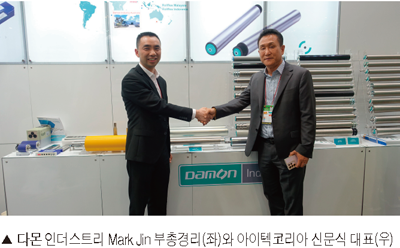 Damon Industry (Damon) exhibited a variety of products at the International Logistics Industry Exhibition with its Korean partner, ITEC Korea, to introduce the Damon Roller directly to Korean customers. Mr. Mark Jin, Deputy General Manager of Damon Industries, visited Korea to receive feedback from customers and to understand the needs of various industries. Q. Damon's global sales growth continues, how is the Korean market doing? Damon has entered many countries such as Japan, the United States, and Europe, and is a popular roller brand around the world, producing more than 20 million rollers annually in the roller field alone. Korea is an important market for the brand, accounting for more than 800,000 rollers annually, making it one of the top five largest sales markets in the world. In fact, last year, damon sales in Korea grew 180% year-on-year. In addition, as Korean companies are expanding into overseas markets such as Vietnam and the U.S., we believe that we can increase the number of deployment cases in overseas markets through Korean companies. Therefore, we plan to work more closely with our Korean partner, ITEC Korea. Q. What efforts are being made to improve quality, which is Damon's biggest competitive advantage. Damon is synonymous with high-end rollers in China, so we are very competitive in terms of quality, and to maintain this, we continue to invest in R&D for product development and quality improvement. In recent years, the company has invested heavily in quality inspection equipment at its factories in China. This is because ensuring quality at the earliest stage reduces the need to inspect finished products, so the entire process is inspected, from raw material incoming to production to shipping. In addition to quality, the company also strives for price. Although rollers have a simple structure that makes them seem indistinguishable from the outside, there is a significant difference in the quality of low-cost rollers due to the bearings, brackets, and other components inside. In response, Damon has adopted a strategy of standardizing all parts and introducing automated production facilities such as robots across its majors to lower prices while maintaining a high level of quality. By doing so, the company aims to gain an advantage in the price competition caused by low-cost rollers made in China. Q. What is Damon's strategy for responding to the increasing number of automated logistics facilities on the market? Automated logistics facilities are often introduced to handle large volumes of goods in a short time. Therefore, there is a growing need for high-speed rollers. In response, we have launched a new product that can rotate up to 2.5 meters per second and 150 meters per minute. Recently, we have also developed rollers that support loads of up to 300 kilograms in response to the growing demand for high-load, high-intensity logistics automation, such as in the secondary battery industry. In addition, we are also supporting our customers' ESG management by improving the design for low noise and using high-strength steel plates for environmental protection. <Copyright ⓒ Monthly Logistics Magazine (www.ulogistics.co.kr) All rights reserved>
|





| 
|








